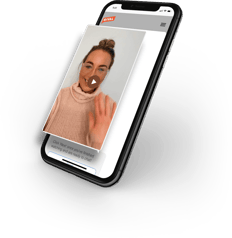
Gen Z is a dynamic and creative generation that is more than willing to share their ideas and insights. Whether it’s through TikTok or text messages to our friends, we’re not afraid to talk about our experiences with brands, whether they're amazing or terrible.
That’s why having a Gen Z community can be incredibly valuable for your brand. It can act as a sounding board and a source of real-time insights from young consumers.
When building a Gen Z community, however, you can’t rely on conventional market research techniques.
To engage Gen Z, you'll need to play by our rules. You have to consider Gen Z’s expectations and behaviors and adjust approach accordingly. This applies to all steps of the market research process, starting from recruitment all the way to incentives and engagement.
So, what are some of the best practices in building a research community of Gen Zs? We hosted a webinar with Rival Group Co-CEOs Jennifer Reid and Andrew Reid about this topic. Their special guest was Francesca Spizzo, a Senior Research Associate from Reach3 Insights who provided her thoughts as both an insights professional and a Gen Z herself.
“Being able to form authentic relationships helps us to avoid mistakes that can result in de-influencing.”
Watch the video or check out our recap below for the highlights.
If you want to reach Gen Zs, you have to go mobile. Often, Gen Z is mislabeled as the “technology-obsessed generation.” But what we truly care about is accessibility. There’s a huge difference between opening our phones to answer a quick SMS survey versus sitting down with our computers to find Wi-Fi and locate a mundane email survey.
Make sure you’re using a market research platform that lets you notify your Gen Z community with SMS. This makes it easy to do in-the-moment research and get feedback faster.
“The one app that is never silenced on a Gen Z’s phone is their messenger,” Rival Co-CEO Andrew Reid, reminded the audience.
We recommend a multi-channel approach when recruiting your insight community. If your brand has a strong social media following, social sampling could be an option.
Other sources such as paid social and custom advertising can add diversity to your community, connecting you with young people who are not currently in your database or who aren’t reachable via conventional sample providers.
Gen Zs grew up with their smartphones and social media, so they were taught from a young age not to disclose their personal information on the internet. Therefore, it is important as researchers that if we want their authentic insight, we must first establish a sense of trust.
As stated by Rival Co-CEO Jennifer Reid, “I think that that’s something we don’t acknowledge enough in the market research industry, and it is of paramount importance when you’re trying to connect with Gen Z.”

Jennifer also emphasized that “transparency leads to trust.” Using video in your research can help with this by providing a sense of authenticity: Gen Z will trust a brand if they know they aren’t speaking to a robot.
When this generation feels welcomed and valued by real people, they’re more inclined to share their perspective and contribute meaningfully.
“Transparency leads to trust.”
This idea of trust also applies to incentives: as research associate and Gen Z Francesca stated, “money is such an important thing to my generation,” and I can certainly attest to that. "For us to make decisions based on an incentive, we need to trust that it’s actually going to come through."
If you’re running sweepstakes as incentives, make sure you close the loop and share with your Gen Z community who won.
“We use incentives because they’re incentivizing, but they only work if they feel real,” stated Jennifer.

Conversational research works well with all demographics, but it works particularly well with Gen Zs.
First of all, a conversational approach establishes a personal connection.
“When you can make something an authentic, ongoing conversation, that’s where insights really do come to life.”
From a questionnaire design perspective, this means avoiding a huge battery of demo questions upfront. When recruiting new members of your Gen Z community, the first two or three questions are the most important: “they are an engagement mechanism, a way for people to get warmed up to your survey,” stated Jen.
Of course, you can still ask questions related to the participant’s demographic info and those related to your research objectives. But you can do so in smaller, more snackable chunks. One of the benefits of having an insight community is that once people have joined, you can use features like Profile Variables to gain a deeper understanding of your members.
Conversational surveys sent to your research community should be short, friendly, and fun. They should also be relevant and as personalized as possible.
When evaluating Gen Z market research firms, say no to those that offer survey apps or portals (or “member hubs”). These popular but outdated market research techniques complicate and slow down the process for Gen Z participants.
Finally, a word of advice if you’re a researcher who’s not a Gen Z:
“We can smell inauthenticity a mile away,” Francesca pointed out. “You cannot replicate an entirely different generation’s lived experience.”
At Rival, our mobile-first, chat-based technology has proven very effective in reaching and engaging with Gen Zs. If you’re interested in building your own Gen Z community or in tapping into our panel, please check out our Gen Z on-demand solutions.
Curious why organizations like Paramount, Roblox and REVOLT TV choose the Rival platform to run their Gen Z communities?
Feel free to reach out to our team for a demo of our insight community platform!
Subscribe to our blog to receive new insights on market research trends.

No Comments Yet
Let us know what you think